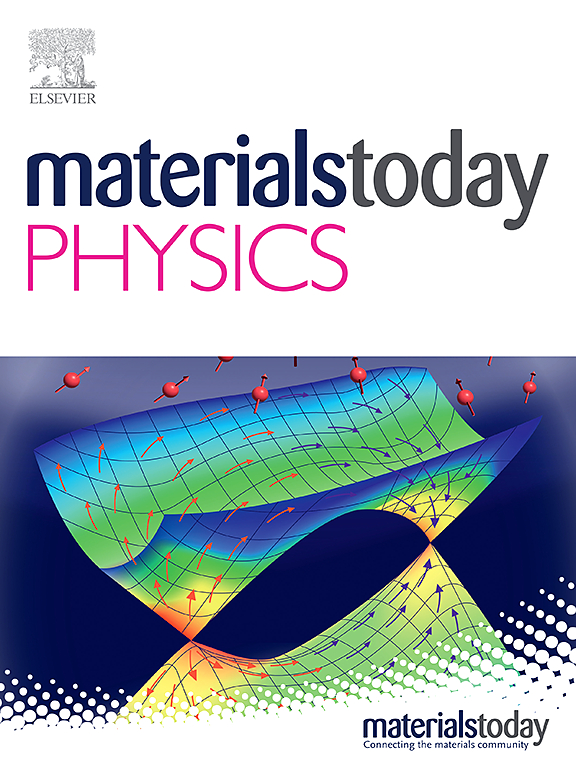High precision prediction of structure and thermal properties of ternary eutectic carbonates by machine learning potential for solar energy application
IF 10
2区 材料科学
Q1 MATERIALS SCIENCE, MULTIDISCIPLINARY
引用次数: 0
Abstract
Molten carbonates with high operating temperatures and excellent thermal properties are very promising phase change material for high temperature thermal energy storage. However, the structure and thermal properties of carbonates at high temperatures are lacking and difficult to measure accurately. Here, a deep potential model of ternary eutectic carbonates was developed by using first-principles molecular dynamics (FPMD) simulations as an initial dataset, and active learning using Deep Potential GENerator. The results indicate that the structure of carbonates becomes loose with increasing temperature, there is rotation of the CO32- in motion, and there is a slight oscillation of the C-O bond. As the temperature increases from 700K to 1100K, the density linearly decreases from 2.01 g/cm³ to 1.86 g/cm³, and the viscosity exponentially decreases from 32.824 mPa⋅s to 3.806 mPa⋅s. The density, specific heat capacity, thermal conductivity and viscosity obtained from the simulation are in good agreement with the experimental values, where the minimum error in viscosity is only 2.45 %. This study opens a pathway to use machine learning potential to predict the melt structure and thermal properties of complex molten salt systems with high accuracy.
通过机器学习高精度预测三元共晶碳酸盐的结构和热性能 太阳能应用的潜力
熔融碳酸盐具有较高的工作温度和优异的热性能,是非常有前途的高温储热相变材料。然而,碳酸盐在高温下的结构和热性能缺乏,难以精确测量。本文以第一原理分子动力学(FPMD)模拟为初始数据集,利用deep potential GENerator进行主动学习,建立了三元共晶碳酸盐的深电位模型。结果表明:随着温度的升高,碳酸盐的结构变得松散,运动中的CO2- 3有旋转,C-O键有轻微的振荡。随着温度从700K升高到1100K,密度从2.01 g/cm³线性降低到1.86 g/cm³,粘度从32.824 mPa·s指数降低到3.806 mPa·s。模拟得到的密度、比热容、导热系数和粘度与实验值吻合较好,其中粘度的最小误差仅为2.45%。本研究为利用机器学习潜力来高精度预测复杂熔盐体系的熔体结构和热性能开辟了一条途径。
本文章由计算机程序翻译,如有差异,请以英文原文为准。
求助全文
约1分钟内获得全文
求助全文
来源期刊

Materials Today Physics
Materials Science-General Materials Science
CiteScore
14.00
自引率
7.80%
发文量
284
审稿时长
15 days
期刊介绍:
Materials Today Physics is a multi-disciplinary journal focused on the physics of materials, encompassing both the physical properties and materials synthesis. Operating at the interface of physics and materials science, this journal covers one of the largest and most dynamic fields within physical science. The forefront research in materials physics is driving advancements in new materials, uncovering new physics, and fostering novel applications at an unprecedented pace.
 求助内容:
求助内容: 应助结果提醒方式:
应助结果提醒方式:


